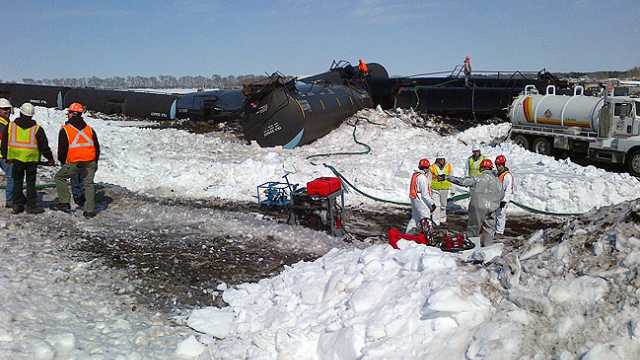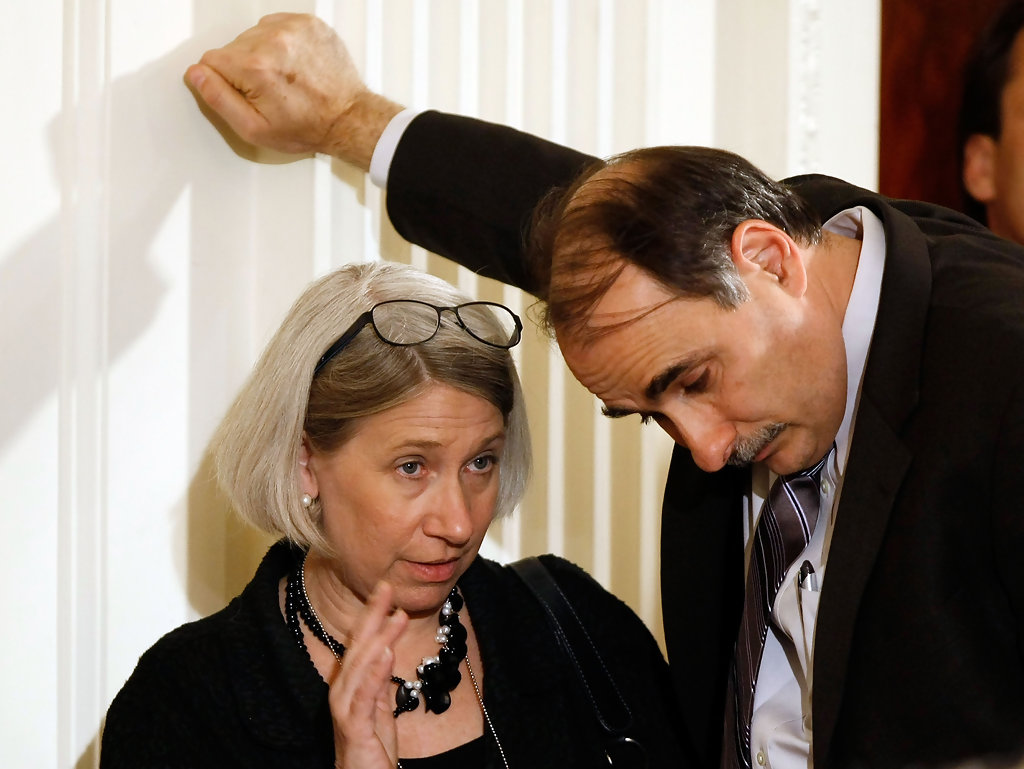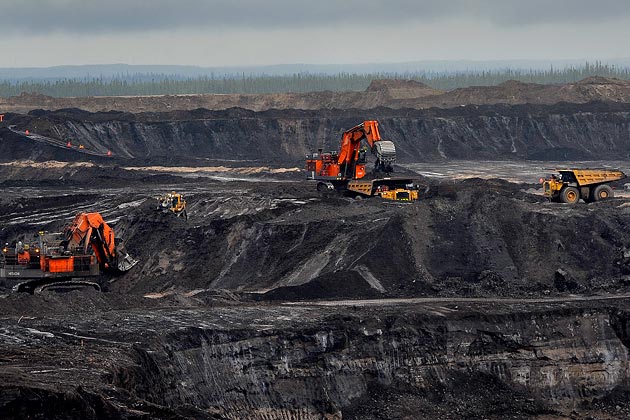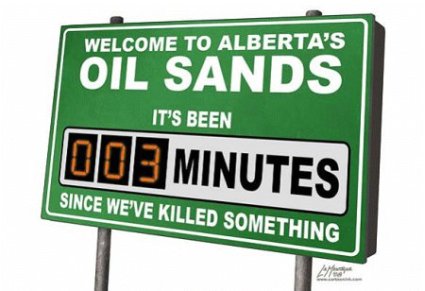
Double-dipping is a "no go" in the real world of eating chips and salsa with a circle of friends, but an everyday reality in the world of lobbyists and PR professionals.
Enter double-dipper Anita Dunn, former White House Communications Director for President Barack Obama who now runs the firm SKDKnickerbocker (Squier Knapp Dunn), a firm that "brings unparalleled strategic communications experience to Fortune 500 companies, political groups and candidates, non-profits, and labor organizations."
Dip one: TransCanada Corporation, which SKDK does public relations work for, as revealed in an Oct. 2012 New York Times investigation. TransCanada is the multinational corporation currently building the contentious southern half of the Keystone XL (KXL) tar sands pipeline, following the dictates of a March 2012 Obama Administration Executive Order. Within months, the fate of the border-crossing Alberta to Port Arthur, TX KXL export pipeline will also likely be decided by the U.S. State Department.
Dip two: Another SKDKnickerbocker client is the Association of American Railroads (AAR), the American Petroleum Institute trade association equivalent for the freight rail industry. Even without KXL - as covered previously on DeSmogBlog - tar sands crude can be moved to targeted markets via freight rail (coupled with pipeline capacity increases of other tubes and potential barging along Lake Superior).
Beneficiaries of tar sands transport via rail include AAR dues-paying member Burlington Northern Santa Fe (BNSF), owned by major Obama donor Warren Buffett via his holding company, Berkshire Hathaway. Shell Oil - a major Alberta tar sands extractor - also pays AAR member dues, which indicates Big Oil understands the strategic importance of rail transport.
Dunn's firm, in short, stands to gain from tar sands extraction with or without a KXL northern half, a classic case of double-dipping.
Keystone XL: Dunn's Obama/Kerry Connections Portend a Dunn and Done Scenario
Dunn has maximized her White House insider access status since leaving the Administration in 2009 and starting SKDK.
"Dunn regularly attends closed-door political strategy briefings with top Obama aides; White House records show she has visited more than 100 times since leaving her communications job," the Oct. 2012 New York Times piece explained. "She is now serving as a paid adviser to the Democratic National Committee."
Dunn's husband Robert "Bob" Bauer also maintains extremely close ties to the Obama Administration, serving as Obama's personal and political attorney.
"Bauer also will play that role for Obama’s new political network, Organizing for America, and the Democratic National Committee, which is administering the network," explained a February 2009 article in Politico, "Bauer's new, unmatched legal power."
In November 2009, Obama named Bauer White House Counsel, a job he left in June 2011 to return to his private practice at Perkins Coie, "focusing on serving as general counsel to the President’s reelection campaign, general counsel to the Democratic National Committee and personal lawyer to President Obama," according to the Perkins Coie website.
SKDK's Bill Knapp, described by the New York Observer in 2004 as "one of the Democratic Party’s most sought-after operatives" helped develop the media strategy and advertising" for Kerry for President 2004 that culminated with a defeat to George W. Bush, while Bauer worked as legal Counsel for Kerry's campaign.
Furthermore, Dunn served as Communications Director from 1987 to 1990 for then-U.S. Sen. Kerry. The Kerry-lead State Department has the final say on whether the KXL north proposal becomes a reality.
As icing on the cake, numerous TransCanada lobbyists have passed through the government-industry revolving door, entering both executive-level agencies and President Obama's inner-circle.
Brandon Pollak, served as Deputy National Director of Grassroots Fundraising for the Kerry for President 2004 campaign. Broderick Johnson went from lobbying for TransCanada to becoming Obama's senior campaign advisor for his 2012 race against Republican Mitt Romney.
With all of these lobbyists using their ties to the White House and State Department, it looks as if the KXL decision is already a checkmate, Dunn and done scenario.
If KXL Fails, There's Always Rail, Barge, Increased Pipeline Capacity Supplements
Dunn's firm will cash in with or without KXL due to its client relationship with AAR. Even without KXL - or for that matter even with it - massive amounts of tar sands dilbit are already transported to market by freight rail, a midstream market brought to the public's attention after the March 2013 Canadian Pacific Rail spill of 30,000 gallons of tar sands bitumen in Minnesota. Canadian Pacific is also an AAR dues-paying member.
In its August 2011 Supplemental Environmental Impact Statement (SEIS), the State Department said that rail currently has the capacity to transport over 1 million barrels of tar sands per day to market.
"Even in a situation where there was a total freeze in pipeline capacity for 20 years, it appears that there is sufficient capacity on existing rail tracks to accommodate shipping...through at least 2030," the SEIS explained. "[S]tatistics from the Department of Transportation,...conservatively estimated that the existing cross-border rail lines from Canada to the U.S. could accommodate crude oil train shipments of over 1,000,000 bpd (barrels per day)."
As a case in point, BNSF is eager to see KXL fail, seeing it as an economic opportunity of epic proportions for its rails.
"Whatever people bring to us, we're ready to haul [and if KXL] doesn't happen, we're here to haul," Krista York-Wooley, a spokeswoman for BNSF said in a Feb. 2012 interview with Bloomberg.
Then there's the option of barging tar sands crude to markets utilizing Lake Superior as a thoroughfare, which Calumet Specialty Products Partners is considering. Platts referred to this proposal as "the Great Lakes option for getting Canadian oil to market."
Lastly, in November 2012, Enbridge - whose Line 2 recently spilled 600 gallons of oil in Viking, Minnesota, and whose Line 6B spewed over 1 million gallons of tar sands bitumen into the Kalamazoo River in what's now referred to as the "dilbit disaster" - applied for a permit to increase capacity of its Alberta Clipper tar sands pipeline approved by the Obama State Dept. in Aug. 2009. The permit requests an increase in capacity from 450,000 barrels per day to 800,000 barrels per day. The company also applied for a permit to increase Line 6B's capacity to 500,000 barrels per day in May 2012, up from 240,000 barrels per day.
“We’re very concerned this has flown under the public’s radar,” Peter LaFontaine of the National Wildlife Federation told Bloomberg in a May 1, 2013 story. “The public doesn’t seem to have the same sort of attention for pipeline expansions as they do for pipeline construction. But we’re talking about a lot of crude.”
Cashing in on Destructive Game of Tar Sands "Whac-A-Mole"
In a November 2012 article on rail serving as an alternative midstream method to pipelines for tar sands, Grist described the situation as one akin to a game of "Whac-a-Mole."
"It’s like a big game of Whac-a-Mole, except what’s at stake isn’t a cheap teddy bear at Chuck E. Cheese but the health of the planet and civilization as we know it," she wrote.
Rather than cashing in on juvenile toys with tokens gained from winning several rounds of Whac-a-Mole, though, Dunn and SKDK are gaining real-life tokens - fat wads of cash - cashing in on this high-stakes game of tar sands Whac-a-Mole.
Originally published by DeSmogBlog.
3 WAYS TO SHOW YOUR SUPPORT
- Log in to post comments














